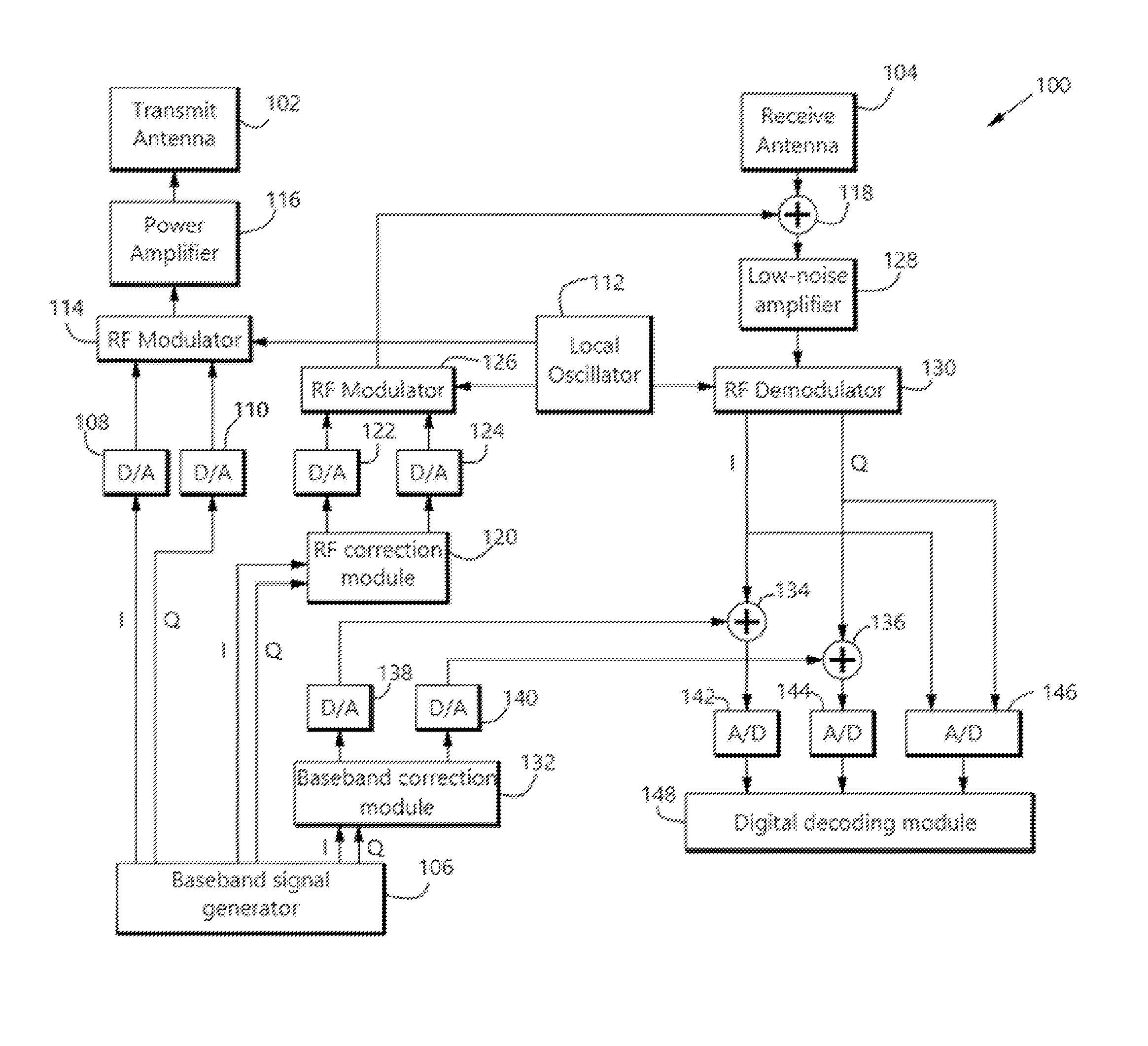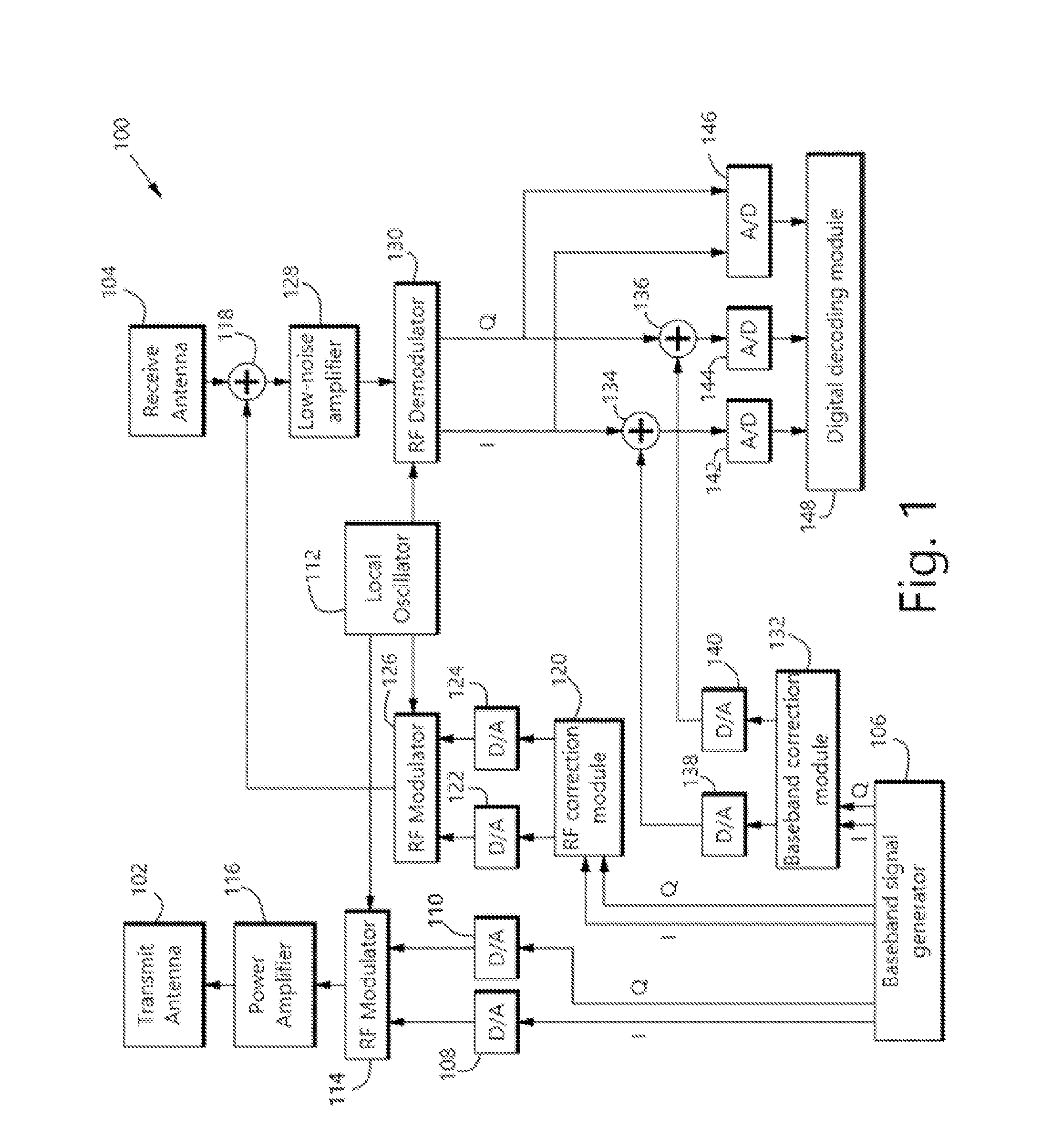Wireless Full-Duplex System and Method with Self-Interference Sampling
a full-duplex, wireless technology, applied in the direction of link quality based transmission modification, transmission, electrical equipment, etc., can solve the problems of limited communication rate, difficult implementation, and inability to transmit and receive concurrently over the entire frequency band, so as to facilitate wireless networking and facilitate detection
- Summary
- Abstract
- Description
- Claims
- Application Information
AI Technical Summary
Benefits of technology
Problems solved by technology
Method used
Image
Examples
Embodiment Construction
[0022]The present disclosure describes systems and methods performed in a full-duplex transceiver.
[0023]In one such method, the transceiver receives an incoming radio-frequency signal that includes both a desired radio-frequency signal component and a self-interference component caused by the transceiver's own radio-frequency transmission. The transceiver demodulates the incoming radio-frequency signal to generate a first demodulated signal. The transceiver also generates a first analog corrective signal and combines the first analog corrective signal with the first demodulated signal to generate a second demodulated signal with reduced self-interference. The transceiver samples the first demodulated signal to obtain a sampled self-interference component; and the transceiver processes at least the second demodulated signal and the sampled self-interference component to determine a desired incoming baseband signal. The transceiver may also generate a second analog corrective signal a...
PUM
 Login to View More
Login to View More Abstract
Description
Claims
Application Information
 Login to View More
Login to View More - R&D
- Intellectual Property
- Life Sciences
- Materials
- Tech Scout
- Unparalleled Data Quality
- Higher Quality Content
- 60% Fewer Hallucinations
Browse by: Latest US Patents, China's latest patents, Technical Efficacy Thesaurus, Application Domain, Technology Topic, Popular Technical Reports.
© 2025 PatSnap. All rights reserved.Legal|Privacy policy|Modern Slavery Act Transparency Statement|Sitemap|About US| Contact US: help@patsnap.com



